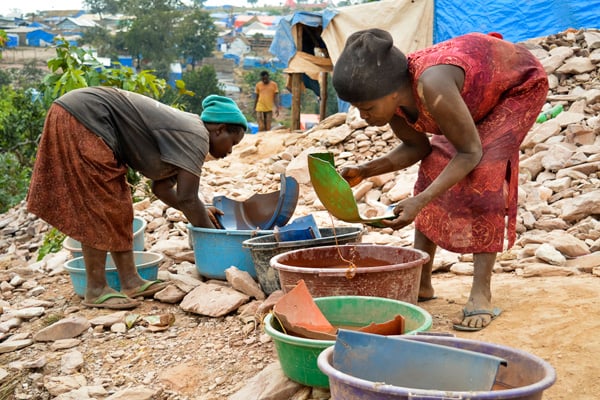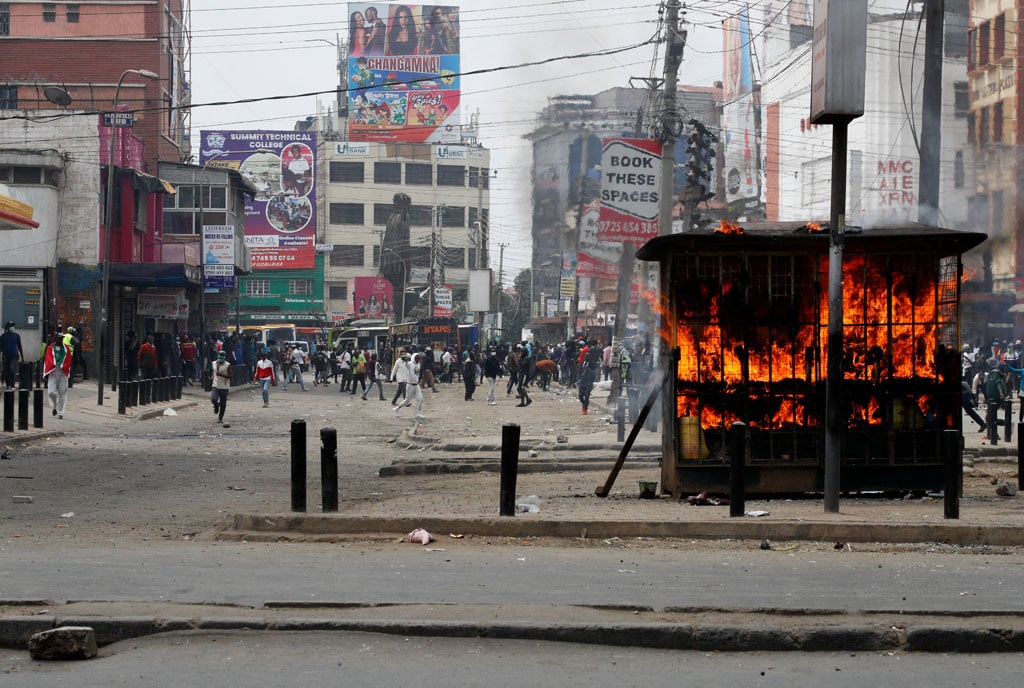Artisanal mining: Enhancing rural livelihoods at the expense of health, environment

Potential: The mining sub-sector has the potential to generate at Shs70.2b annually. FILE PHOTO
What you need to know:
- Artisanal gold mining has for long been a source of livelihood for the rural poor.
- In the long run, the people engaged in gold mining are exposed to the risk of diseases associated with the processes in the industry, and they are, in turn, degrading the environment
Stella Adeke has been an artisanal miner for the last 15 years, eking a living in the mineral rich Tiira village, in Tiira Town Council, in Busia district. Before she leaves her home, the 34-year-old miner first prepares the morning meal for her family.
Then, she collects the sand she had crushed the previous day, and pours it into an old basin. With the basin on her head, she walks to the rudimentary processing shack, a few metres away.
Within minutes, she pours water into the basin and begins the sieving process. Midway, she adds a small ball of mercury into the basin, and scours through the mixture with her bare hands. Mercury, she says, is an important element in extracting the gold.
“I am aware that mercury is bad. But, our gold comes from rocks, which we have to crush to dust. The only way we can extract the gold is by using mercury. A few years ago, a team came to the mines and taught us how we can extract gold without using mercury, but it is a slow process. However, we took some of their advice. Previously, I was using the one basin for the gold process, bathing and washing clothes. Now, because I know mercury is dangerous, I don’t use the site basin for personal use,” says the mother of six.
In many developing countries, artisanal and small-scale mining is an important part of the economy, especially for the rural poor. For instance, 90 percent of the world’s mining workforce is engaged in artisanal mining. Of these, 30 percent are women. More than 150 million people depend on this type of mining for their livelihood.
Traditionally, the mining industry has always played an important role in Uganda’s economy, with minerals such as, gemstones, white marble, sand, limestone, gold, copper, tin, and iron ore, among others. These minerals provide rural communities with a daily source of income.
In the 1950s and 1960s the mining sector accounted for 30 percent of Uganda’s export earning. However, the sector declined, and according to the Uganda Bureau of Statistics (UBOS), in the 2022-2023 financial year, mining contributed 2.2 percent to the national gross domestic product (GDP).
Statistics from the Ministry of Energy and Mineral Resources, show that Uganda has slightly over one million artisanal miners, 90 percent of whom rely on the use of mercury to extract gold.
The risks
Through the mining, Adeke has been able to pay school fees for her children, feed them and even save small amounts of money to buy livestock. However, these achievements have come at a cost.
Her 13-year-old son, who is in Primary Seven, is afflicted with a condition akin to nystagmus, which she believes could have been caused by her heavy use of mercury.
“When he was a baby, I used to bathe him in the same basin I used to sieve the gold. I think mercury affected his eyes. The eyes dance (in the sockets) just like mercury does. They are not stead. He has to sit directly in front of the blackboard at school, otherwise he will not see what the teacher writes,” she says.
With nystagmus, the eyes make repetitive, uncontrolled movements – side to side, up and down, or in circular motions. The movements can result in reduced vision and depth of perception.
Dr. Matthias Wabwire Panyako, Busia district’s health officer says the local government has been aware of the effects of mercury on the artisanal miners for a long time.
“Busia is full of gold mines and over the years, our people have been exposed to mercury because it is the metal used to extract the gold. We are recording cases of miners who report to our health facilities with eye defects, numbness, tingling sensations, memory loss, and brain damage, which we fear, are as a result of mercury use,” he says.
Unfortunately, many miners do not visit health facilities often, so it is difficult to quantify the extent of the exposure and its effects.
“Once mercury enters the body, it affects the central nervous system. But, in the communities, most people do not know this, or they do not know that the effects they are presenting with are as a result of exposure to mercury. When they heat the mercury, it turns into vapor, which is inhaled. Inhaled mercury affects the lungs, kidneys, liver, heart and central nervous system,” Dr. Panyako adds.
In October 2013, governments around the world signed the Minamata Convention on Mercury, which outlines how nations can develop a public health strategy on the exposure of artisanal and small-scale gold miners and their communities to mercury. This would be done through gathering health data, training health workers and raising awareness to the dangers of mercury.
A 2014 study published in the Environmental Health Perspectives concluded that individuals involved in the gold mining operations and their families are exposed to dangerous levels of mercury. Residents in gold mining communities and downstream of gold mining communities consume fish that may be heavily contaminated with mercury.
The study also found that the most common health effects reported among workers engaged in small-scale mining are neurological effects, that include tremours, ataxia, memory problems, and vision disorders.
Why mercury use persists
During a recently concluded consultative meeting in Dar es Salaam, Tanzania, experts in East and Southern Africa, experts discussed an artisanal strategy. Dr Omer El Nagieb from the Centre for Occupational and Environmental Health Africa explained that mining diseases are occupational diseases.
“Investing in occupational health and safety for mining communities is the responsibility of governments and their citizens. One of the key diseases is silica dust disease caused by dust inhaled from crushed stone and sand. If inhaled over a period of time, it destroys the lungs, leading to death. Other diseases include tuberculosis and HIV, which is common because people in mining sites make quick money and tend to have multiple sexual partners,” he says.
Dr Omer added that governments should establish basic health care centres in mining communities. “It is important to engage in awareness creating because most miners do not know the dangers they are faced with.”
The capacity of primary health care providers should also be enhanced to enable them to carry out health surveillance.
Artisanal mining is also a major contributor to environmental degradation and pollution due to the digging up of soil and sluicing involved, which leads to soil erosion and degradation. Mercury contamination can also affect the surrounding fauna and flora, accumulating in aquatic ecosystems.
In Tiira village, for instance, huge craters have formed across the land as miners dig up pits looking for gold. Similarly, studies have shown that soils abandoned at mine sites are heavy in metals and light on the nutrients needed for crops to grow.
Uganda is a signatory of the Minamata Convention. The use of mercury in mining operations is outlawed by the Mining and Minerals Act 2022, which sets steep penalties for persons found using mercury. However, despite the hazards presented by mercury, the metal continues to find its way into many mining areas through the porous borders.
Agnes Alaba, the Commissioner for Mines in the Ministry of Energy and Mineral Development says the ministry is working closely with the National Environment Authority to implement an eradication policy against the use of mercury.
“We are already sensitising the artisanal miners to stop using mercury. Instead, we are encouraging them to use borax and leaching, which do not pose serous health and environmental challenges,” she says.
Borax, a powdery white substance, also know as sodium borate, is cheaper than mercury.
Life goes on in the mines
In other mines, Sunday Monitor encountered men who complained of erectile dysfunction, which they tagged to their use of mercury in processing gold. The men spoke on condition of anonymity to avoid stigma.
“For close to two years now, I cannot function sexually. I cannot fulfill my conjugal rights and I fear this may be because of the long-term effects of mercury. I am not alone; several miners are suffering in silence because they don’t want to be ridiculed,” one man says.
To sustain themselves in the bedroom, the miners have turned to the use of energy drinks. They also use traditional medicine vended by Masai hawkers, and witchcraft to recover their lost manhood.
However, Dr. Panyako says while erectile dysfunction might be as a result of mercury poisoning, it also has other causes.
“Erectile dysfunction touches the central nervous system, which is one of the areas affected by mercury inhalation. However, resorting to energy drinks and enhancements may lead to severe problems and eventual death,” he says.
A 2024 study published in the BMC Public Health journal concluded that the demand for large-scale extraction of minerals and metal resources in Africa is on the rise, driven in part by the global shift towards a low-carbon future. However, the continent’s rich resources present both opportunities and challenges for the local communities, accompanied by environmental degradation, hazardous working conditions, inadequate health and safety precautions, the involvement of child labour, and engagement in illegal mining operations.



